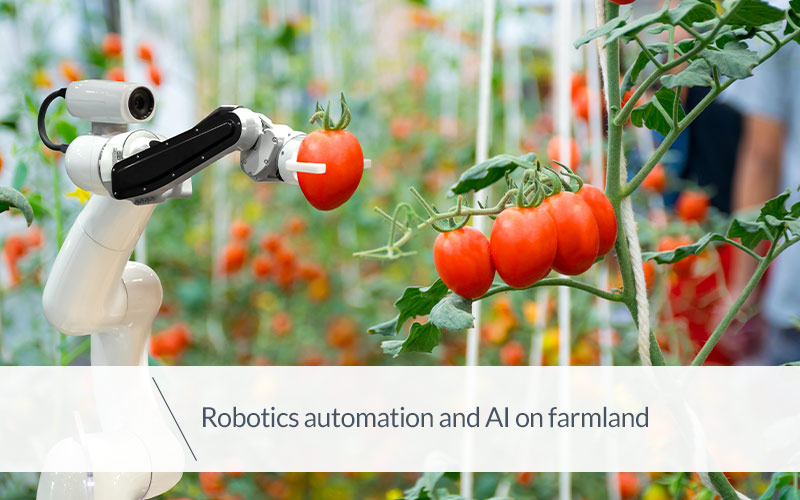
Usually, we tend to associate the image of a factory, and indeed that of “industry” in general, with the automation of processes, while we rarely think of farms or agricultural holdings in those terms.
However, this sector has been since a long time heavily influenced by the introduction of newer and better performing machinery. The evolution of humankind itself is a direct result of this type of agricultural mechanization, which has allowed populations to grow and indeed settle.
Today, besides tractors, combine harvesters, ploughs and all the other machinery we tend to associate with a farm, we are witnessing the beginning and significant phase of change, which will take the agricultural sector to the next level.
In particular, we are referring to the increasingly important roles which robotics, automation and artificial intelligence occupy and which hint at the future robotization of farms.
Will robots replace farmhands?
When discussing automation and robots it’s fairly impossible to ignore the elephant in the room, i.e. the progressive substitution of human workers by robots, mostly due to increasing labor costs and aimed at improving productivity.
Be aware, however, that this is not a sci-fi movie where actual humanoid robots take the places of human workers! We mean robotic machines, technological tools and devices.
An example? Drones, which can gather a crate of vegetables from a field and carry it to a processing factory or a warehouse, or are used to monitor the crops where cultures extend in enormous fields.
This topic is the subject of discussion in an article published in The Washington Post “Farmers have more mouths to feed. Bring in the robots.”. This article makes reference to the effects of minimum wage increases in California, and this has in turn has meant increased reliance on automation.
What is actually happening (according to the scenario described by a journalist of this renowned American daily)?
In the past the cost of technology was higher than that of human labor, therefore small/medium-sized businesses simply couldn’t access it. Nowadays the cost of labor has increased to make it just about the same as purchasing/maintaining technology, so agricultural business owners are left with the dilemma of choosing between investing in people or in robots.
Robots and people can work side-by-side?
This is another of those 64-million-dollar questions: easy to answer in theory, but in reality, things change according to the actual context.
Indeed, we need machines to reduce the manual workload with positive outcomes in terms of productivity, health and safety.
Instead of spending hours in the sun to plough a field manually, we can utilize machinery which carries out the same task, better and faster, without tiring any worker.
This process holds up when the farmhand can put down his/her shovel and take over tractor driving, shaping up into a different kind of worker and acquiring new skills, but the trend for driverless vehicles is also affecting the agricultural sector. Thus, shortly, not even drivers will be required.
This is just one example of many.
Artificial intelligence will make human intervention obsolete even in those activities where it seems totally necessary, for example in evaluating if a fruit or vegetable is ready to be harvested or not.
The advantage of robotics in agriculture
As always, however, there are two sides to the coin. Some manual jobs are destined to disappear over time, but the use of new technologies means the creation of new and different professional roles.
There will be a need for people able to combine agricultural skills with engineering and informatics skills, to design, build, use, update and maintain machinery introduced in the farms.
Investing in robotics, automation and artificial intelligence will favor a radical improvement in production processes in farms, and not just in large-scale ones, but also in the increasingly common businesses which are investing in new technologies, such as skyfarming and hydroponic farming.
Today there are robots available on the market that can conduct many jobs usually lying in the human worker domain, for example weeding, pruning, harvesting, sowing, cultivation, milking and many others.
And lastly, we should not overlook another vital aspect on this subject: the human population is growing at a frenetic rate and this brings with it the need for increased food supplies.
In brief, we need a higher number of farms and agricultural business and the only way we will achieve that is by finding a way to embrace, to the fullest possible extent, robotics and all the advantages it brings.
The following, highly interesting, video shows 13 examples of robotics at work in agriculture.



